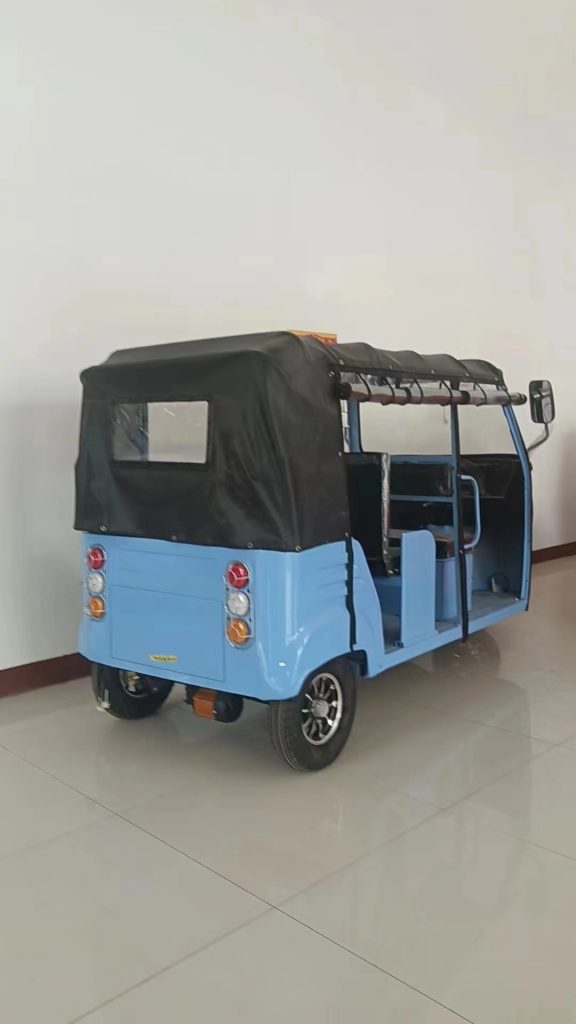In recent years, low-cost and eco-friendly transportation alternatives have gained the interest of the world. Among all these alternatives, the electric passenger tricycle has been a smart and convenient choice for urban and rural communities. With its miniaturized size, efficiency in terms of energy, and low cost, it is transforming short to medium-range travel. To transporters, relatives, and local transport operators, this three-wheeled electric car is becoming a reliable mode of transport between the traditional bicycle, motorcycle, and motorcars.
1. Accessibility in Rural Villages
The best advantage of the electric passenger tricycle is that it can easily be accessed in rural villages. Public vehicles such as buses or taxis are not available in the majority of rural villages due to the lack of proper road networks or lower population density. Under these conditions, an electric passenger tricycle is an alternative solution. It is light and therefore it is simple to transport on thin roads and dusty tracks, and therefore the villagers can move comfortably.
To farm families, the tricycle is a three-in-one vehicle: taking children to school, picking produce from markets, or touring with elderly relatives. Its electric character also reduces dependence on expensive fuels, which can be less accessible in rural settings. With cheaper mobility costs, farm families save economically while enjoying cleaner and quieter transportation.
2. Efficiency in Urban Towns
The same purpose is filled by the electric passenger tricycle in small towns and cities. Traffic in cities is on the rise, and traditional fuel-based means of transport are producing more emissions and noise. Electric tricycles provide a cleaner solution by providing lower emissions at the expense of none in the form of carrying multiple passengers.
The majority of the short-distance town transportation operators are buying electric tricycles because they require minimal maintenance and are cheaper compared to conventional taxis or minibuses. The tricycles are typically employed as a public means of transport for short distances, e.g., between estates and nearby markets, bus stops, or railway stations. This renders them very useful in filling the “last-mile connectivity” gap for city public transport schemes.
3. Economic Opportunities
The rise of electric passenger tricycles has also given birth to new business opportunities. Across Asia and Africa, entrepreneurs are starting businesses as local transporters, purchasing fleets of tricycles to transport commuters. For both the manufacturers and distributors, the heightened demand has given rise to a competitive supply chain of electric tricycles for passenger dealers who provide different regional specifications.
These sellers not only market the vehicles but also customize, providing weather-proof canopies, additional seats, or cargo mounts. The tricycle’s versatility makes it a popular choice for individuals and small businesses alike. In countries like China, the electric tricycle industry is thriving, and a number of companies specialize in quality designs with a focus on battery longevity and durability. It is no wonder that China’s electric tricycles for passenger models are being exported all over the world due to their reliability and affordability.
4. Environmental Effects
The environmental effects of electric tricycles are also unprecedented. Gasoline cars are significant sources of air pollution, particularly in cities. However, electric tricycles do not emit tailpipe emissions. That results in cleaner air, reduced greenhouse gas emissions, and healthier neighborhoods.
Moreover, the majority of electric tricycles come equipped with rechargeable lithium-ion batteries, and it is possible to drive them on clean energy resources such as wind power or solar power. In rural areas where there is no guaranteed fuel supply, this provides clean and independent energy.
5. Affordability and Low Maintenance
Affordability is perhaps the greatest benefit of electric passenger tricycles. Compared to cars or minibuses, the cost of acquisition is significantly lower and hence can be afforded by low-income households. Fuel costs are also low as refuelling is relatively cheap compared to purchasing gasoline or diesel.
Maintenance is incredibly simple, too. With fewer mechanical parts than motorbikes or cars, electric tricycles require less routine service. This reliability provides family homes and small transport firms with the assurance that they can use the vehicles every day without pouring money into repair work.
6. Future Prospects
In the future, the demand for electric passenger tricycles will increase. Governments globally are encouraging green mobility solutions through subsidies, tax credits, and infrastructural planning. With continuous advancements in battery technology, future tricycles will have improved ranges, faster charging, and even better efficiency.
Electric tricycles will be a lifeline to village families and small businesses, enabling access to mobility where conventional transport is not an option. In urban towns, they will facilitate cleaner and greener transport networks, reducing congestion and pollution.
Conclusion
The electric passenger tricycle is not only a mode of transport—it is a force for social, economic, and environmental transformation. Through the provision of mobility, creation of small business opportunities, and reduction of environmental impacts, it has become a central component of modern mobility. With ongoing innovation from electric tricycle for passenger suppliers, and electric tricycle for passenger China’s quality production capacity, the vehicles will continue to play an increasingly important role in the creation of future green mobility worldwide.

 Instant
Quote
Instant
Quote Email
Us
Email
Us